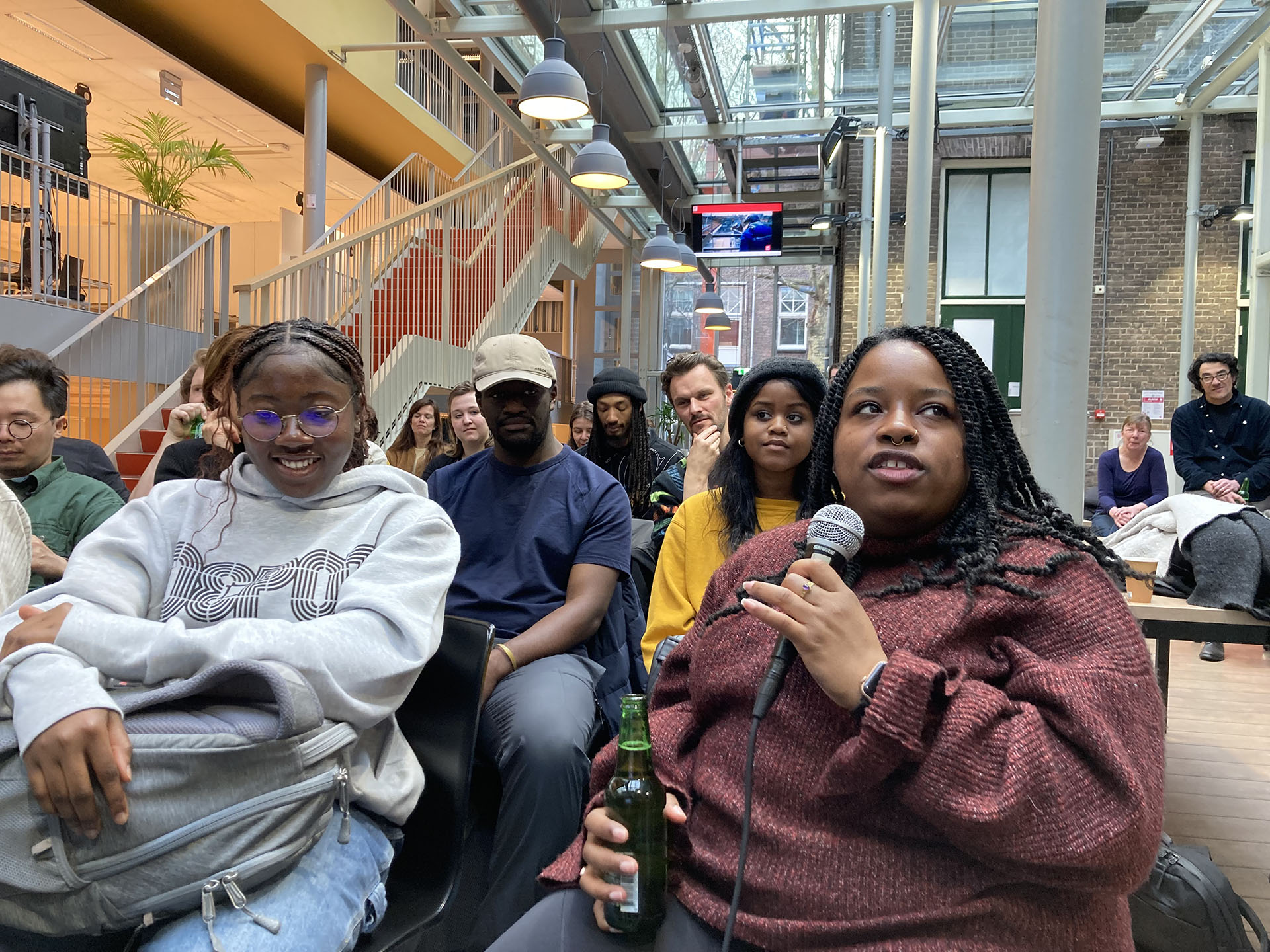Day 8 – Time to Say Goodbye 3-17-2023
Officially the last day of our trip! Today students will either rest, head back to the States, or travel independently starting tomorrow through Monday. The day was characterized by spending time with new friends and colleagues, cycling and walking around, being aware of the fact that the city is working with its residents to facilitate slow mobility, and starting healthy conversations on how things could be improved on both sides of the pond.
The morning program was at De Rotterdam with students and faculty from the Rotterdamse Academie van Bouwkunst. There we received lectures from Andre de Wit and Karen van der Spek, who provided us with a brief history of Rotterdam, explained the mobility vision of the city, and introduced the City Lounge Concept, as well as the Walk Monitor (R’Dam Walks). Martine de Vaan pitched and reflected on Citydeal, an initiative driven to promote urban walkability during office hours. The concept revolves around entertaining business conversations while walking through the city: MeetWalk.
In general, the City of Rotterdam is pushing toward a transportation model where cars are at the bottom of the mobility pyramid while pedestrians, bikes, and public transit are at the top. Before hitting the streets of Rotterdam with bikes, we had the opportunity to exchange and compare realities from across the pond. Rotterdam’s transformation is from a car-oriented city to a well-curated set of slow human-centric experiences. On the other hand, Baltimore is still gentrifying areas that are less than 50% Black. After this lecture, we biked all together to the Académie where we had lunch before a Guerrilla walk to the Little C, Erasmus Hospital, S Gravendijkwal, and Huize Middelland/Wijkpaleis. The walk was organized to provide the students with a first-hand urban experience and critique. We concluded the walk with students’ observations shared during teatime at Coolhaven (Cool).
Back to the Académie, Klaus Philipsen lectured on Baltimore. This was an intense conclusion of the program. Klaus presented the reality of Baltimore to an audience that, urbanistically speaking, is extremely privileged! Rotterdam is transforming the city; designers are looking into producing energy through buildings; cars are downsized; public transportation is solid; riding a bike is cultural, and roads’ sections are diversifying to allow more people to walk on the streets.
After eight days in Rotterdam, the students’ sensitivity to their surroundings has changed leading to a rather animated discussion. Much of the conversation revolved around systematic racism and institutionalized discrimination. The group discussed how segregation has contributed to the failure of urbanity in the States.
Specifically, students addressed the history of Baltimore’s infrastructure in their discussions. For example, there was an interesting debate in Baltimore afterthe City received $2 million in federal funding to plan for the redevelopment of the Highway to Nowhere in West Baltimore, a highway project that destroyed homes and businesses and displaced 1,500 residents at the time of its construction more than 50 years ago. Exchanging ideas with Karen van der Spek (Program coordinator, City of Rotterdam), she shared that Rotterdam, in a metaphorical sense, also had its one highway to nowhere: to build a six-way road, the river Rotte would have had to be filled in and two very characteristic neighborhoods, the Oude Noorden, and Crooswijk, would have been cut in two and partly demolished.
Fortunately, in 1970 these working-class communities came into action and, in 1975 successfully stopped the plan. This event marked a change in the way the city would be developed. Rotterdam would no longer focus on getting cars from point A to point B as swiftly as possible but instead would invest in the ideas of attractive green and pedestrian-friendly neighborhoods. Karen surmised that the Black communities along the Highway to Nowhere in Baltimore might have had zero support and suggested that the big difference between the two sister cities is the Gini Index of Baltimore, which shows a large inequality in the distribution of income.
In Conclusion
This was an amazing opportunity for students to participate in this tour. None of this would have been possible without the SA+P students. The students were the driving force for successful fundraising, the opportunity for local architects to join the trip, and my motivation to craft such an exciting program! Also, the fundraising committee that so graciously volunteered their time and experience to secure the financial possibility for the students to travel to Rotterdam.
Thank you to:
Penza Bailey, a studio of PRIME AE
Gary A. Bowden FAIA, Architect Emeritus
Day 3 – Amsterdam Walking Tour
Day 4 – Delft-Rotterdam – Back Down Memory Lane
Contact Information
Office of Public Relations & Strategic Communications
1700 East Cold Spring Lane
McMechen Hall Rm. 635
Baltimore, Maryland 21251
Contact Information
Office of Public Relations & Strategic Communications
1700 East Cold Spring Lane
McMechen Hall Rm. 635
Baltimore, Maryland 21251


